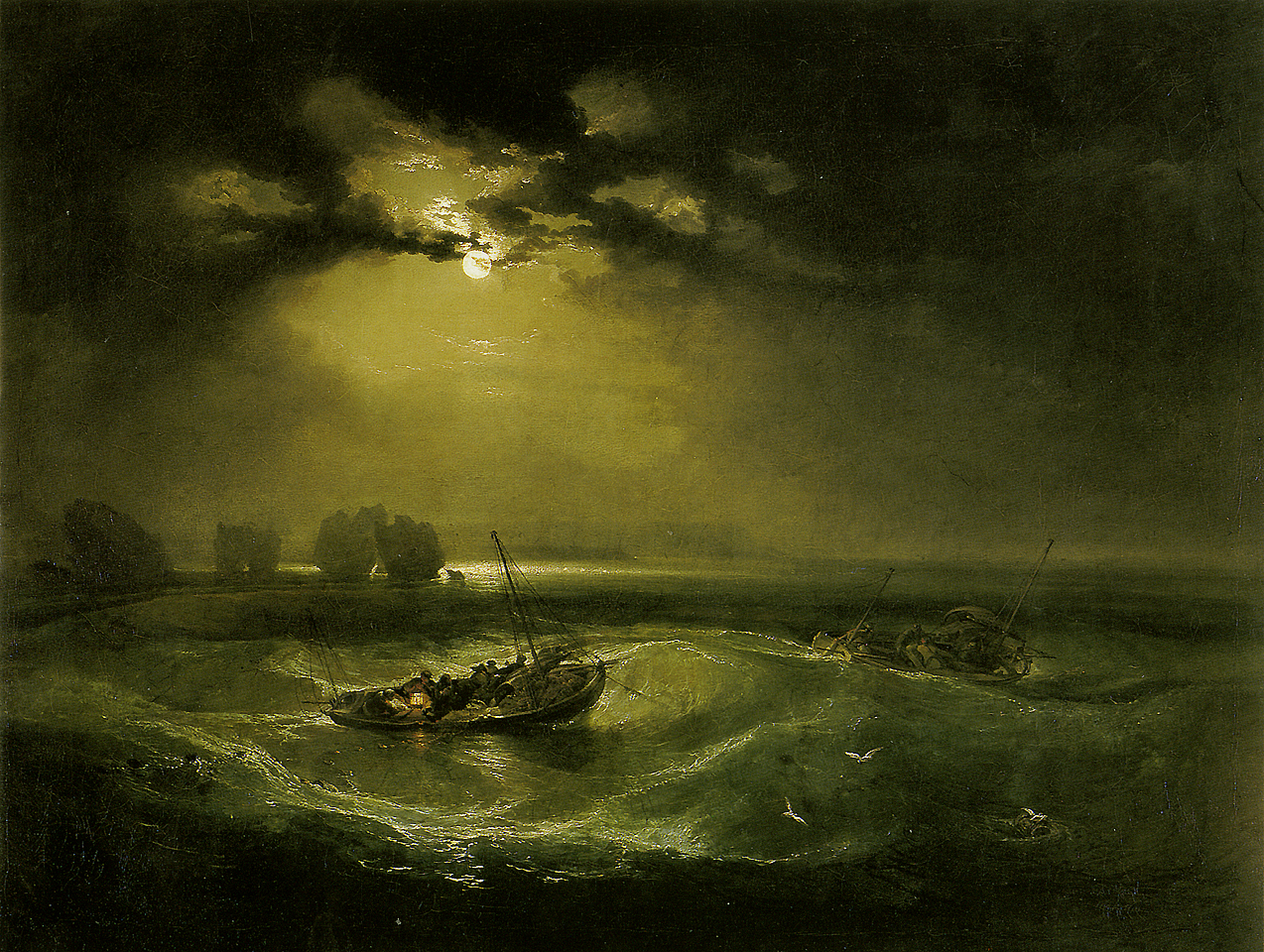
Fishermen at Sea, by J.M.W. Turner, 1796. Tate Britain.
• Rehabilitating the Victorian era: “One cannot accurately speak of a Victorian Revival so much as the abrupt lifting of a mighty taboo, which had a galvanizing effect on scholarship, fashion, museology, contemporary art and design, and even urban planning. But the neo-Victorian moment is now as much a closed chapter as its anti-Victorian predecessor, although it has faded away so gently that most have forgotten how vital it once was. It is worth a backward glance, if only to see what it got right and what it got wrong.” (New Criterion)
• The link between J.M.W. Turner, London geography, and Moby Dick. (New Statesman)
• More than half a century after the first appearance of The Lion, The Witch, and The Wardrobe, readers young and old are still baffled (and enchanted) by Turkish delight. (Atlas Obscura)
• The stuntwomen of Hollywood’s silent screen: “Silent movie actresses like Helen Gibson were the first stuntwomen. They were actresses who could ride horses, drive cars, and do high dives. From about 1910 to the early 1920s, they proved that the ‘weaker sex’ could perform surprising physical feats. During that time, the overlapping advent of movies, automobiles, and airplanes, as well as the possibility of women’s suffrage, set in motion a major cultural transformation in America and around the world.” (The New Republic)
• A brief history of fictional drugs. (Motherboard)
• What if there were an airport in the middle of Central Park? “In their 1967 book Central Park: A History and a Guide, Henry Hope Reed and Sophia Duckworth published a map of thirty-three ‘Improvements Suggested for Central Park Since 1900,’ which included everything from a 1903 exposition building to a World War I display of trench warfare to ceding land from 106th to 110th streets for a public housing project. But Reed and Duckworth’s map of ‘improvements’ (the word appears in scare quotes in almost every instance) only scratched the surface.” (Curbed)
• The (re)discovery of a certified literary genius: “In 1984, writer and critic Bette Howland won a MacArthur genius grant. In 1983, she published Things to Come and Go: Three Stories. In 1978 she published her first story collection, Blue in Chicago. The same year, she won a Guggenheim fellowship. Her first book, the memoir W-3, was published in 1974.” (LitHub)